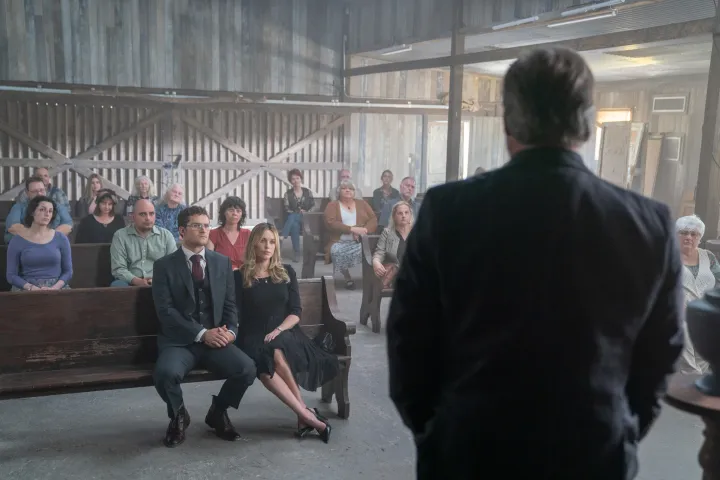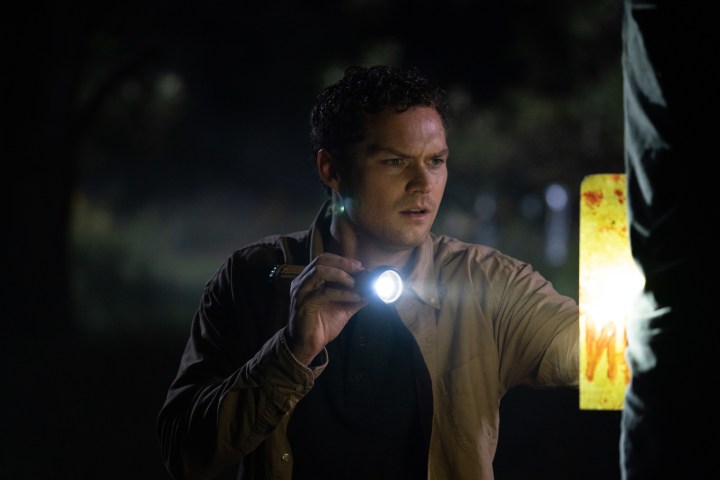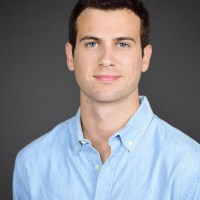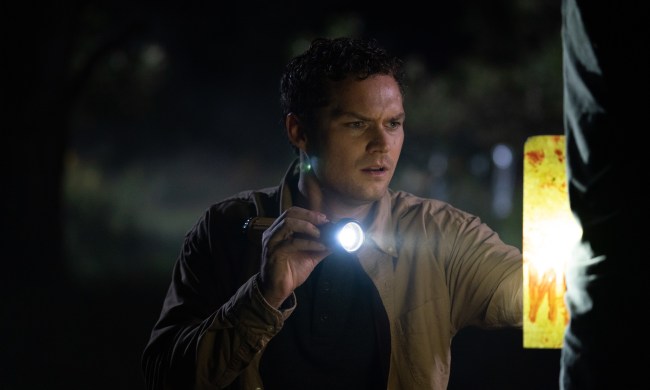In the last four years, Justin P. Lange has directed three horror films: The Dark, a zombie story about abuse and trauma; The Seventh Day, an exorcism saga where a veteran clergyman teams up with a rookie priest to fight demon; and his latest film, The Visitor, a psychological thriller about a man searching for answers about a strange doppelgänger. You would think Lange is comfortable watching horror. Yet, that couldn’t be further from the truth. Lange is terrified of horror films.
In my conversation with Lange, the director speaks about his introduction to horror, why he’s afraid of pretty much everything, his collaboration with Finn Jones for The Visitor, and how a grad school class changed his life.

Note: This interview has been edited for length and clarity.
Digital Trends: I read that you weren’t allowed to watch horror growing up because you grew up in a strict household. When you were finally able to watch horror, what about these films spoke to you?
Justin P. Lange: I think at one friend’s house, I saw Friday the 13th. At another friend’s house, I saw Predator. It’s really limited to those two. I didn’t have a lot of exposure. I think at some point I saw Jaws.
Those are great films to watch if you’re going to pick three.
[Laughs] I was so scared of everything. My brother once freaked me out and told this story of this alien ship coming down and attacking this family, and, of course, the younger brother got it the worst. That night I went home and I couldn’t sleep so I had to devise a story where I was completely covered by blankets, head to toe, and then I thought they couldn’t see me. That was the only way I could sleep, to devise that story. I slept like that for years until my brother walked by my bedroom one night, saw me like that, woke me up, and said, “You know you’re going to suffocate like that, right?”
So then I had to devise a new story where I was like E.T. and I would sleep with this little hole. [Signals hole in front of face] Sometimes I think like, “Oh, I wasn’t really built for horror films because I’m afraid of everything, and every five seconds, I think I’m going to die.” But then I’m like, “Maybe I was perfectly built for horror films because I’m afraid of everything.” [Laughs] I don’t know.
My entryway into it was when I went to film school. I was a really late, late bloomer in horror. Even then, when I went to film school, I thought there was no place for me there. I don’t watch those movies that much, and I’m too afraid of them. As I said, I don’t think I’m right for it.
A friend of mine in film school recommended I see Let the Right One In, and it really spoke to my aesthetic. It was beautiful but terrifying. It sort of opened the door and said, “You’re allowed here.” Seeing Pan’s Labyrinth, the lyrical and fairy tale aspect, it’s very earnest, but also very scary and really subjective. That spoke to me a lot. So I ended up opening my mind to it a little more.

Then, I got into my final directing class at Columbia Graduate Film School. At the time, I took myself very, very seriously. I was trying to do a European aesthetic, static camera, people just walking around talking. I came into that class, and my teacher had asked to watch all our stuff, and he said, “You know whatever this thing is that you’re doing, blow it up. Do the furthest thing for this next exercise. Do the furthest thing from what you would do.”
For me, at the time, it was horror. So I did this little horror piece, like a three-minute exercise, and brought it into class. They just exploded. It was just the most visceral reaction I ever had from an audience watching something I’d made.
Something clicked and I was just like, “Oh, maybe there’s something here.” During that class, it was very intense. We would watch movies, and we would break it down, shot by shot. We’d go for hours and hours on one movie. During that class, we broke down Jaws and Poltergeist and Rosemary’s Baby. That was sort of The Wizard of Oz, “seeing the wizard behind the curtain,” of how these films are made.
And don’t get me wrong, I’m still terrified of horror films. But, at the same time, I love making them. It’s so active as a director and playful and manipulative. It’s just the most fun. I’ve sort of found my way into this genre, and I’m really grateful for it because, for some reason, it allows me to express myself in a way. I think I tend to be kind of earnest and very sincere, but it balances me a little bit and gives me the ability to express some of the darker stuff that maybe was harder for me to express before I found it.
What stood out about Finn in casting Robert?
What I really wanted with Robert was somebody who was an everyman, accessible to the audience, someone we could root for and get behind. His [Finn’s] character really starts as this, for lack of a better term, a nice guy, you know? He wants the best for his partner and wants to be a good partner. He has his own demons and things he’s fighting with, but in the end, what he really cares about is his family. He wants to start a family. He also is kind of earnest and sincere in the beginning.
Then slowly as he starts to go down this rabbit hole, Finn and I started talking about how these elements of toxicity start to come out. It’s really this idea of his past pulling him back and taking control of him. It was important that throughout the film, he has moments where he can make a different decision. He can change things, but he doesn’t. That’s what sort of makes him tragic as well as Maya. She also is tragic.
Unlike your previous two features, you didn’t write this script. Did that present a new set of challenges?
Yeah, sure. It was something I was really, really interested in doing. I have been for a while. I really consider myself more of a director than a writer. But, I am a writer. I enjoy writing. When I’m looking at projects as a director, what I find exciting is I read a script and I’m like, “I would never have written this.” I don’t want to be limited to only things that exist in my brain. I mean that’s not what’s fun about film. What’s fun about film is the collaboration and seeing what other people come up with. It was a really interesting and rewarding experience to do that.
But sure, it does present its own challenges. You’re sort of putting your stamp on something, trying to at the same time be respectful to the ideas that the writers had in the first place. I think that transition and sort of getting it from their version to my version, which is still the same thing but with some changes and putting my stamp on it and sort of treading that line, is an interesting process.
Luckily, I was working with two writers who were just really generous artists and were excited about my vision and were really open to changes. I think what can maybe be a more arduous process or one with more conflict really wasn’t in this. They were very generous with their work and really kind of open to ideas.

I’ve seen you use the quote, “Art imitates life,” and I think that comes together in The Visitor. How did you apply that quote to the film?
I didn’t even know I used that. [Laughs]
I saw it on your Instagram.
I probably did. How that strikes a chord for me is that I do like, if I’m making a film, for it to acknowledge that it exists within a context. It’s not necessary. It’s certainly not a message movie per se or anything like that, but it was saying something, at least for me, in the sense that it’s exploring ideas and trying to be provocative in a way to say think about this. We’re all born into a context. We’re all born into a world where there are systems that are in place before we got there, and once we enter in, it’s not like we’re not affected. We have to be cognizant and aware.
If we do want to make changes, it’s not all about today or not all about the bubble within which we live. There are bigger things at play. We’ve got to dig a little deeper into our past to figure out to make those changes. And usually, those changes are hard. Throughout the movie, the choices that play differently in this movie are hard choices to make, and it’s what makes our characters tragic because they don’t make these hard choices. They continue to follow these paths that were set out for them.
The Visitor is now available on digital and on demand. It also will be on EPIX in December 2022.



